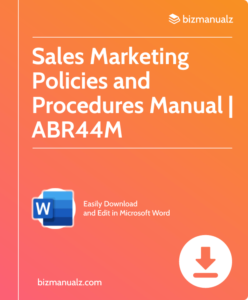How to Account for Sales Tax Paid On Inventory

Sales tax on inventory must be accounted for accurately. This helps businesses keep financial records and follow tax regulations. Here, we’ll look at various aspects of accounting for sales tax on inventory. Plus, we’ll give tips to streamline the process. How to account for sales tax paid on inventory.
Accounting for Sales Tax Paid On Inventory
Recognize that sales tax is often imposed on goods or services by governments. When buying inventory for resale, businesses may need to pay sales tax. This has to be recorded and accounted for precisely.
Differentiate between taxable and nontaxable purchases. Most tangible goods may be taxed. But, certain items might be exempt. It’s vital to know which ones.
Keep the sales tax amount separate from the cost of inventory. Create separate accounts or ledger entries. This makes it easy to calculate the value of inventory for financial statements.
Document invoices, receipts, and other supporting documents. This helps accurately record transactions and can be used during audits or enquiries.
Pro Tip: Use accounting software or systems to manage sales tax on inventory. These tools automate calculations, generate reports, and simplify tracking. Time and errors are reduced.
Understanding Sales Tax Paid on Inventory
Sales tax paid on inventory refers to the tax businesses pay when buying goods for resale. It’s vital to know how to account for it, to keep accurate financial records and comply with tax rules.
To understand this concept, let’s look at the following table:
| Item | Quantity | Cost per Unit | Sales Tax Rate | Total Cost (Including Tax) |
|---|---|---|---|---|
| A | 100 | $10 | 7% | $1,070 |
| B | 50 | $20 | 9% | $1,050 |
| C | 200 | $5 | 5% | $1,050 |
The table shows three items (A, B, and C) and their quantities, prices, and sales tax rates. By multiplying the cost with the quantity and including the sales tax, the total cost of each item can be determined.
In some cases, businesses may be exempt from paying sales tax until the goods are sold.
Pro Tip: Keeping precise records of sales tax paid on inventory aids in accounting and guarantees correct tax reporting.
Steps to Account for Sales Tax Paid on Inventory
Accounting for sales tax on inventory? Keep it compliant! Here’s the key steps:
- Figure out the applicable tax rate; this varies based on your business’ location and nature.
- Log all purchases, and be sure to record any sales tax paid too.
- Set up a specific account for tracking these expenses.
- Calculate and report the sales tax liability; include it as a payable or accrual until it’s remitted.
And don’t forget: reconcile your records with supplier documentation to make sure you’re accurate. Otherwise, you could face penalties like the major retail chain in 2017.
Examples and Scenarios
Let’s learn how to manage sales tax on inventory purchases with some real-life examples.
- Buying inventory with sales tax:
- If you buy goods that include sales tax, add the tax to the cost of the inventory.
- If you are exempt from paying sales tax on certain items, make sure to have proof and keep track of it separately.
- Different locations have different sales tax rates:
- If you buy inventory from various regions, remember to note the place and its corresponding tax rate.
- Selling inventory without collecting sales tax:
- You could sell inventory without collecting sales tax, for example in a wholesale transaction or to a customer outside your jurisdiction.
- Document these exempted transactions and stay compliant with relevant laws.
- Remitting sales tax on sold inventory:
- When you sell items and collect sales tax from customers, make sure to remit the collected taxes to the relevant authority.
- Reconcile collected taxes with records for accurate reporting.
- Sales returns and allowances:
- When a customer returns an item or gets an allowance, document any adjustments to the original sale price and tax owed.
Now, let’s go over the unique aspects to watch out for when accounting for sales tax on inventory.
Here are some tips to make the process easier:
- Use an automated system to keep track of and calculate sales taxes.
- Review and update sales tax rates regularly.
- Set up proper documentation and records.
- Stay up-to-date with complex sales tax regulations.
By doing this, you can stay on top of sales tax paid on inventory and ensure legal compliance.
Tips and Best Practices
- Keep accurate records of inventory purchases, including the sales tax paid – this will help correctly report sales tax.
- Opt for accounting software that works out and tracks sales tax automatically – it’s time-saving and reduces errors.
- Look to a tax specialist for advice – laws on inventory and sales tax can be complex and vary based on location.
- Get cloud-based accounting software that links to your e-commerce platform – it can automate calculations and give real-time reports.
In 2018, a small business owner faced tough penalties for missing sales tax on their inventory – leading to audit, legal fees, and fines. Businesses now prioritize accurate sales tax accounting to avoid similar troubles.
Account for Sales Tax Paid On Inventory
Businesses should consider using accounting software that has features specifically for tracking sales tax. Automatically calculating the amount of sales tax on each purchase makes it easier to track and report this info.
Reconciling the sales tax accounts with the tax reports filed with authorities is also important. Check for discrepancies and errors so they can be corrected in time.
Detailed records of sales transactions should also be kept, including receipts and invoices. These serve as evidence of sales tax paid and can be used to verify accuracy. Following these steps helps maintain correct financial records and minimizes the risk of errors or penalties during audits.
Frequently Asked Questions

Q1: Do I need to account for sales tax paid on inventory?
A1: Yes, it is necessary to account for sales tax paid on inventory as it affects your financial statements and tax obligations.
Q2: How do I record sales tax paid on inventory?
A2: To record sales tax paid on inventory, create a separate account for sales tax and increase the cost of inventory by the amount of sales tax paid.
Q3: Should I include sales tax as part of the inventory cost?
A3: Yes, sales tax should be included as part of the inventory cost as it directly affects the purchase price of the inventory.
Q4: Can I claim a refund for sales tax paid on inventory?
A4: Depending on your country’s tax regulations, you may be eligible for a refund for sales tax paid on inventory. Consult with a tax professional or the local tax authority for more information.
Q5: How often should I reconcile sales tax paid on inventory?
A5: It is recommended to reconcile sales tax paid on inventory regularly, such as monthly or quarterly, to ensure accurate financial reporting and compliance with tax laws.
Q6: What documents should I keep as proof of sales tax paid on inventory?
A6: Keep copies of purchase invoices or receipts that clearly show the amount of sales tax paid on inventory. These documents serve as proof during audits or tax assessments.
















Leave a Reply